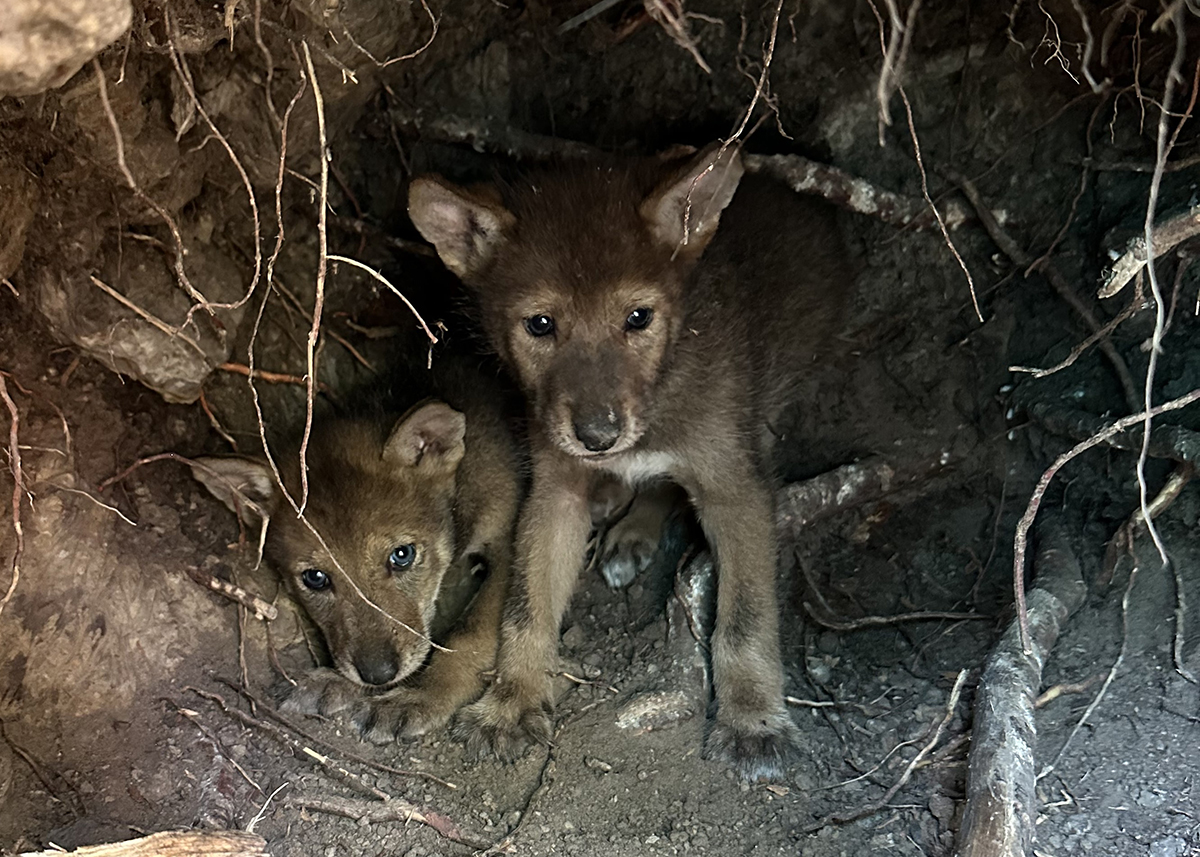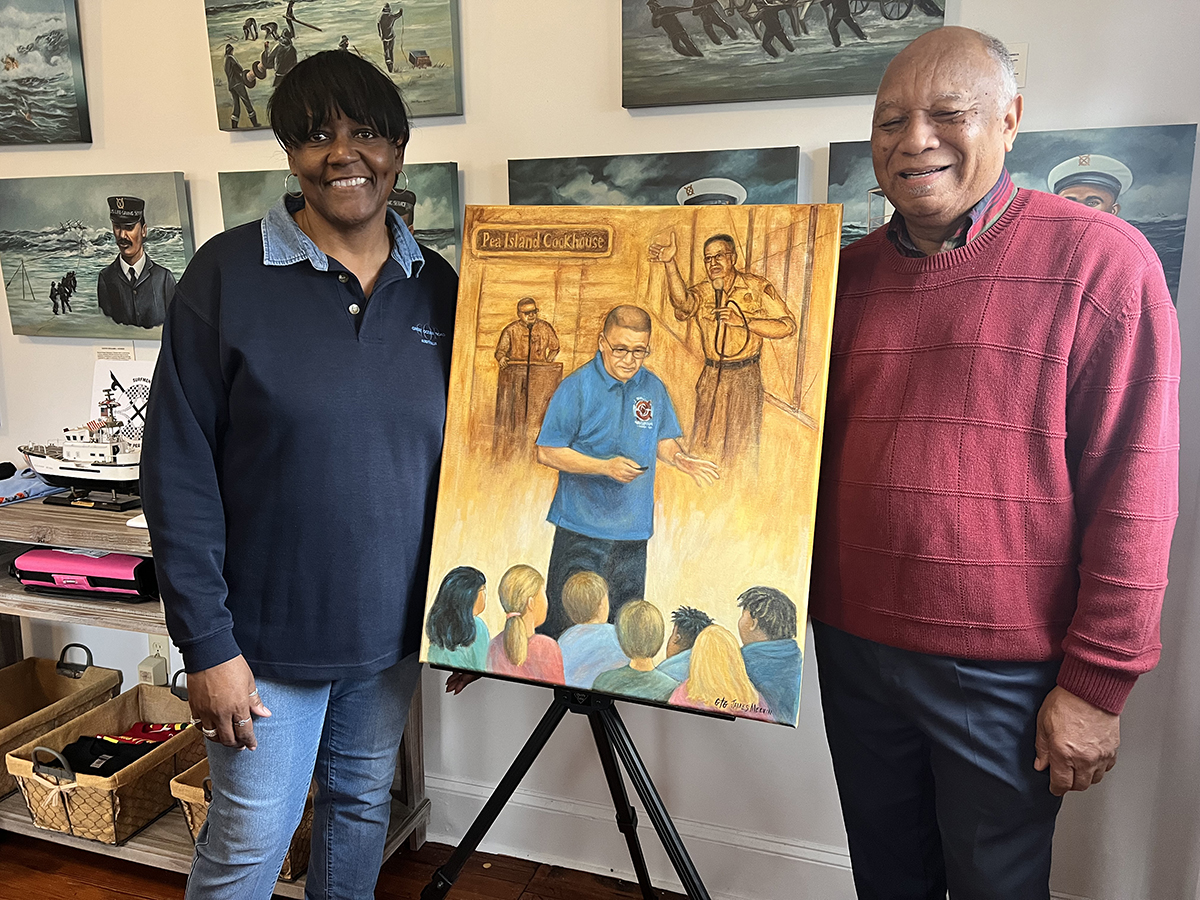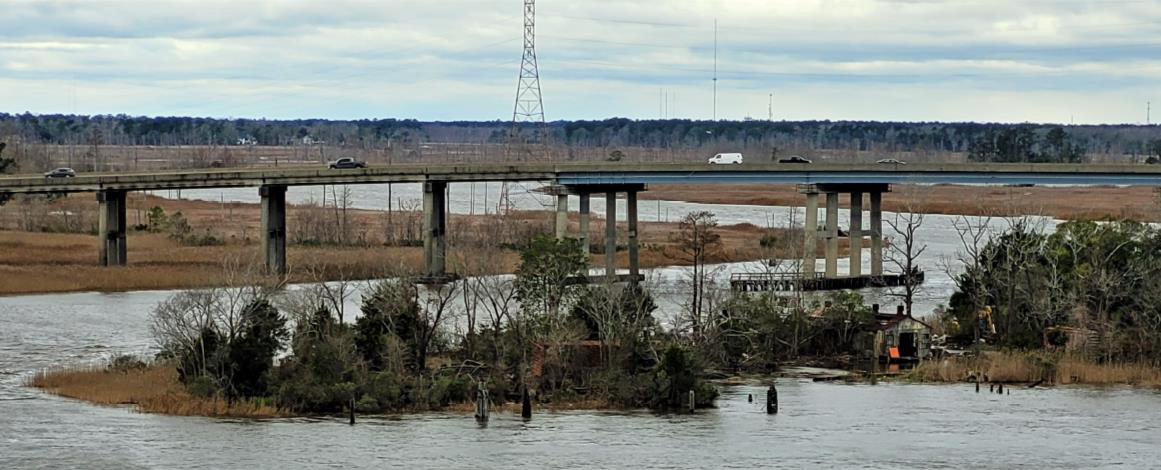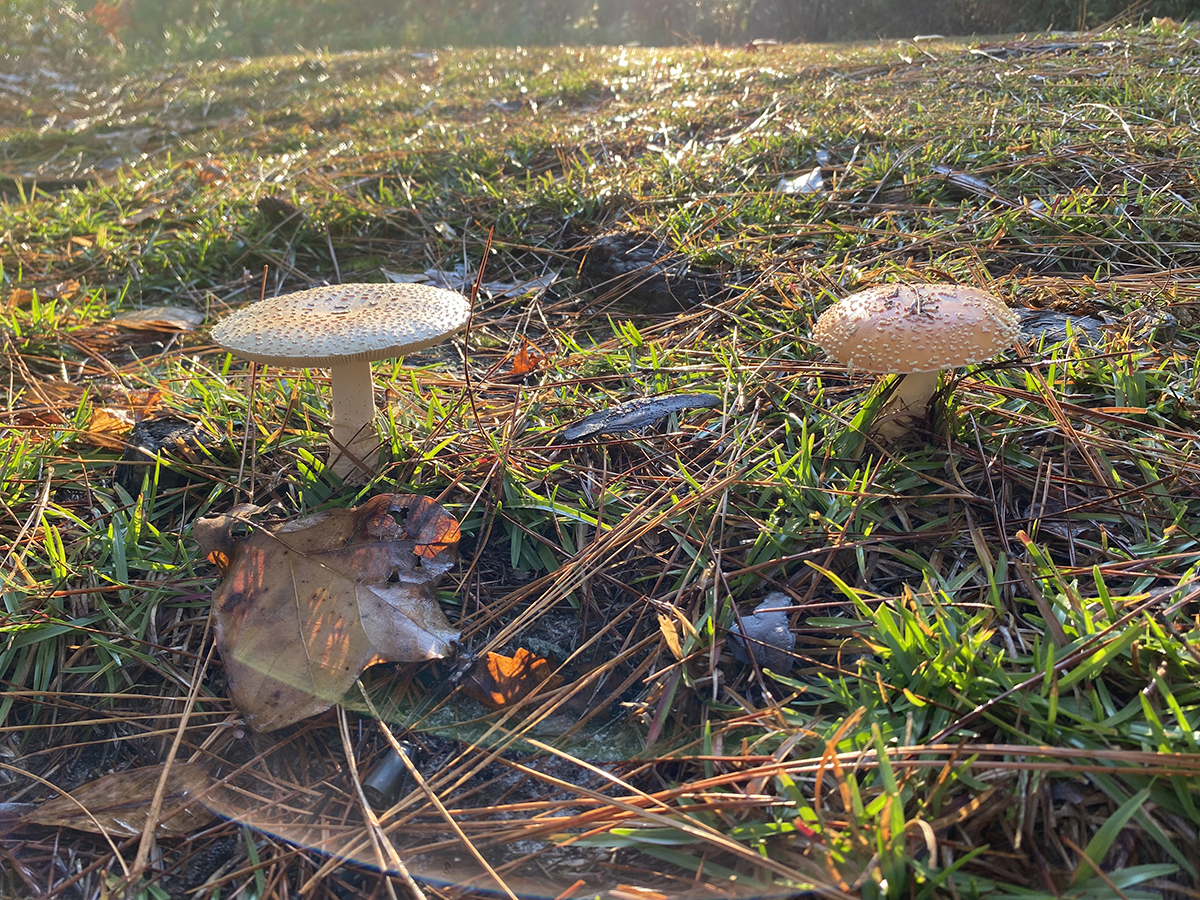
EAST LAKE — Red wolf populations in northeastern North Carolina are still far from recovered, but there are optimistic signs that the highly endangered species now has a solid chance.
More wolves are breeding, more pups are surviving, coyote hybridization has been cut, and there are fewer mortalities from vehicle strikes and gunshots.
Supporter Spotlight
While still modest, those successes reflect increased community engagement and renewed commitment from the U.S. Fish and Wildlife Service and its numerous partners.
“It’s kind of a small crew, but we’re really dedicated to what we’re doing here,” wildlife biologist Joe Madison, North Carolina program manager for the U.S. Fish and Wildlife Service’s Red Wolf Recovery Program, said during a virtual meeting held Sept. 23 to provide updates on the program. “We want to make this work. We want to work with landowners to make this work. We don’t want to impose it.”
Madison said that only about half of the red wolves roam within Alligator River National Wildlife Refuge land. The population, as of August, according to Fish and Wildlife data, totals about 30 red wolves, including 18 collared adults as well as uncollared juvenile wolves and a few other adults. This population roams the designated recovery area, 1.7 million acres of public and private land in Hyde, Dare, Tyrrell, Washington and Beaufort counties. Red wolves have been seen in all five counties
It is the only known wild population in the world.
Red wolves had once ranged over wide swaths of the U.S. mainland, including much of the Gulf Coast and Southeast regions, but after years of overhunting and habitat loss, the animals were declared extinct in the wild and added to the Endangered Species List in 1967. Twenty years later, four pairs of captive wolves, offspring of wild stragglers captured earlier in Louisiana, were transferred to Alligator River National Wildlife Refuge, headquartered in Dare County. Innovative management tactics led to steady population growth, reaching a height of about 120 red wolves by 2007.
Supporter Spotlight
In 2020, there were only about seven collared wolves.
But poor communication with landowners led to angry confrontations over wolves coming onto private lands, while coyote hunting regulations led to mistaken identities. Political support and funding for the recovery program dropped precipitously, and more wolves were being shot, whether intentionally or by mistake. By 2015, proposals were introduced to drastically reduce or potentially eliminate the program. After a series of lawsuits by environmental groups, the recovery program was eventually restored.
As Red Wolf Recovery Program Coordinator for the U.S. Fish and Wildlife Service Emily Weller has acknowledged, the agency had to change the way it operated.
“Reintroducing a large carnivore into the wild had never been done before, and the focus of this program in the beginning was almost entirely biological,” Weller said, according to minutes of a management update meeting in September 2024. “But the social aspects, the community engagement, and human dimension — those were the cracks in our program’s foundation.”
Now the concept of “collaborative conservation” is viewed as critical to the survival of the red wolf, she said recently.
“We cannot recover this species on our own,” Weller said during this week’s virtual update. “Our work depends on a pretty complex network of organizations, agencies, communities and individuals.”
That network includes veterinarian care at North Carolina State University and local veterinarians, staff with the North Carolina Wildlife Resources Commission, and assistance from numerous nonprofit and nongovernment groups.
“The science tells us what’s possible,” Weller said. “But it’s the relationships, the trust, the collaboration, that really determine what’s achievable.”
The Fish and Wildlife Service also now works with “Prey for the Pack,” a habitat-improvement program that engages with private landowners in eastern North Carolina wolf recovery areas in mutually beneficial habitat programming.
The Red Wolf Recovery Program also works closely with 52 zoo and wildlife centers across the country as part of the Saving Animals From Extinction, or SAFE, program, an initiative of the Association of Zoos and Aquariums, which currently cares for 280 captive red wolves. Part of the program’s goal is to increase the SAFE population to 400.
“They are a critical piece of this program in that they support the establishment of wild populations in maintaining genetic diversity,” Weller said.
Much care goes into choosing captive wolves to transfer to the recovery program in hopes of future pairing, as well as deciding which pups to place into dens with similarly aged pups for wild mothers to adopt, Weller noted.
“We rely on universities and academia for research and data to guide and base our decisions, and we’re using it constantly to adapt our management,” she said. “And then we need close coordination and communication with local landowners and community members to understand and incorporate their concerns and hopes for their community, as they have the most direct bearing on conservation and recovery, since they are the ones that live with the red wolves.”
Weller said that, other than a period of time when spending was frozen or restricted, the current funding for the Red Wolf Recovery Program had not been reduced.
Ultimately, she said, success will be when red wolves can be delisted — when they don’t need human help to survive — which is expected to take about 50 years, if all goes as planned.
Criteria that meets that goal include measurable thresholds: three viable populations, distributed to maximize redundancy and protect from catastrophic loss; one population of at least 180 and two with a minimum of 280 wolves, each with high gene diversity. Populations must be stable or growing for a decade with minimal human help and have a 95% probability of persisting for 100 years.
And finally, there must be long-term commitment that the sustainable populations can be maintained into the foreseeable future without Endangered Species Act protections.
“Red wolf recovery is about far more than just saving the species,” Weller added. “It’s about restoring ecosystems or landscapes to their natural balanced state and creating healthier environments that benefit plants and wildlife, including game species, and people.”
Every December, the red wolf program issues a release strategy for the coming year, that sets out a plan of how many captive wolves to release into the wild population that will best enable genetic diversity and sustainable growth. Changing conditions will be considered in any necessary revisions.
“It is also important to recognize that the ability to execute many of the releases is highly dependent on numerous on-the-ground factors,” according to the 2024-25 plan. “These factors include, but are not limited to, the ability to successfully capture specific wild Red Wolves, the correct timing of birth, and size of wild ad captive litters, to allow for pup fostering, and the survival of individual wild Red Wolves included in the scenarios.
“Given the myriad of factors that influence the different scenarios, the Service’s actions described in this strategy require real-time flexibility and the ability to adapt to changing factors on the ground and situations; thus, they require management discretion in the field to maximize the chances of success.”
Madison said that the team depends on having that flexibility to make judgment calls and adjust management tactics. During the update meeting, he elaborated on numerous and highly complex strategies that go into pup fostering, proper wolf-human interactions and handling — as little as possible — and wolf feeding – frozen, wild, small mammals like rabbits, raccoons, nutria and fresh frozen roadkill, like deer — and matchmaking (wolves are picky and fickle, too).
But Madison seemed quite pleased with the improvements in pup population survival, an obviously critical component of species recovery.
The pup survival rate to one year is typically about 50%, he said, but after two complete litters didn’t make it in recent years, the recovery team determined that the likely cause was canine distemper.
“So this year when these pups were in an acclimation pen, and they were five weeks old, we went in the pen, recaptured them, and we gave them their first round of vaccines,” Madison explained. “Also, we implanted them with abdominal transmitters so we would be able to track them after they were released.”
So far, so good, he said. A family group that was released into the wild in May seems to be thriving.
“We may go into the season with a great plan, but then, you know, stuff happens out there,” Madison said. “And we have to adjust and make do with the best we possibly can.”







